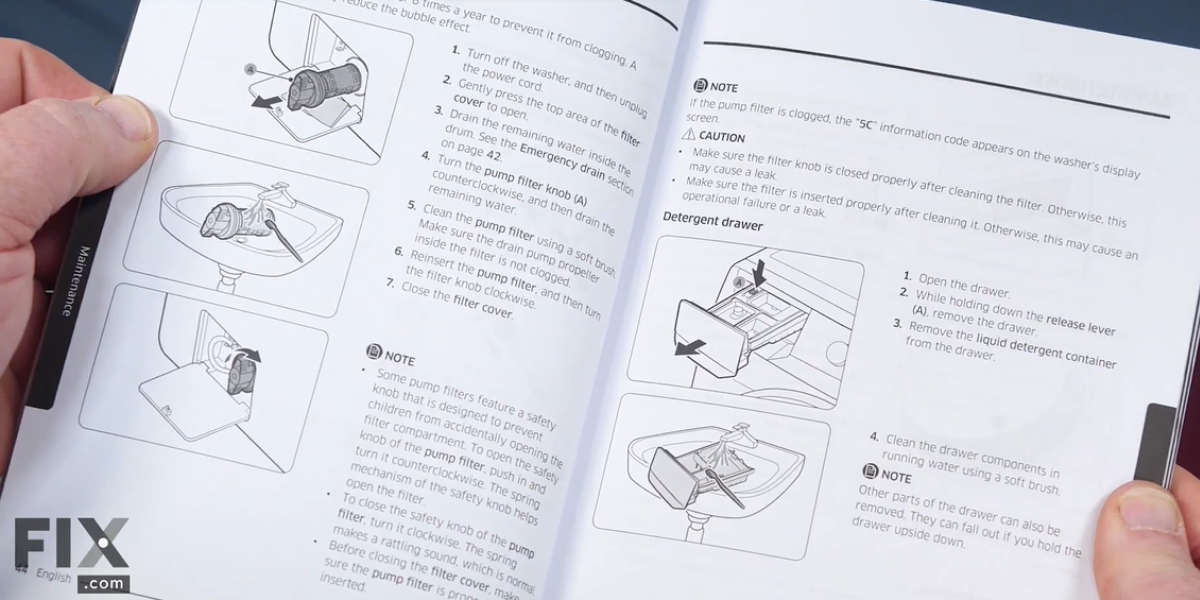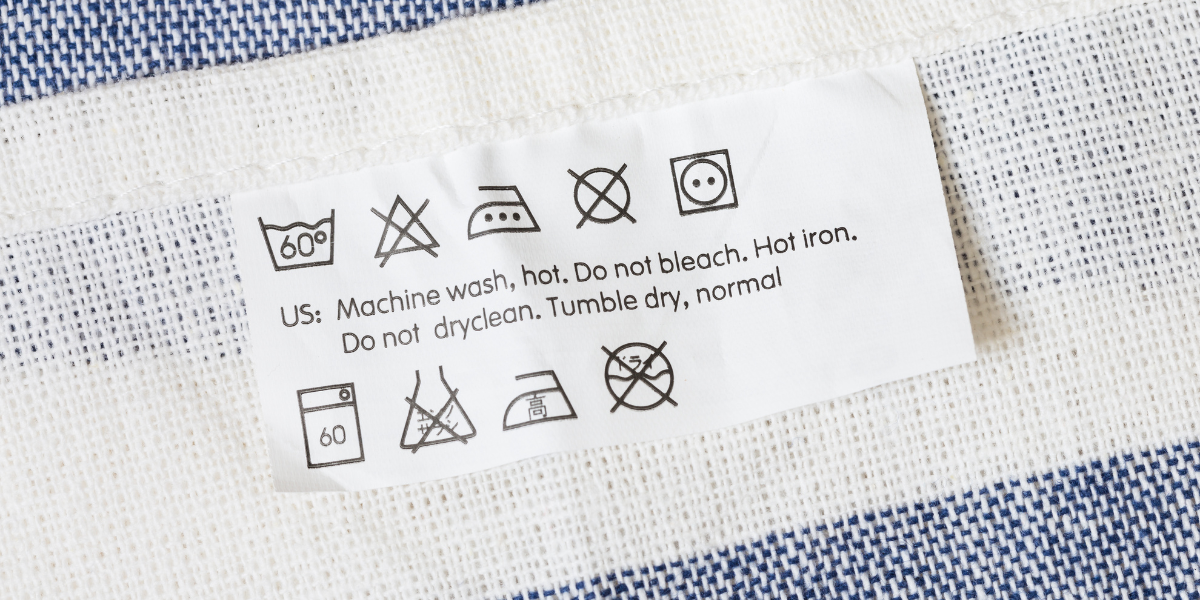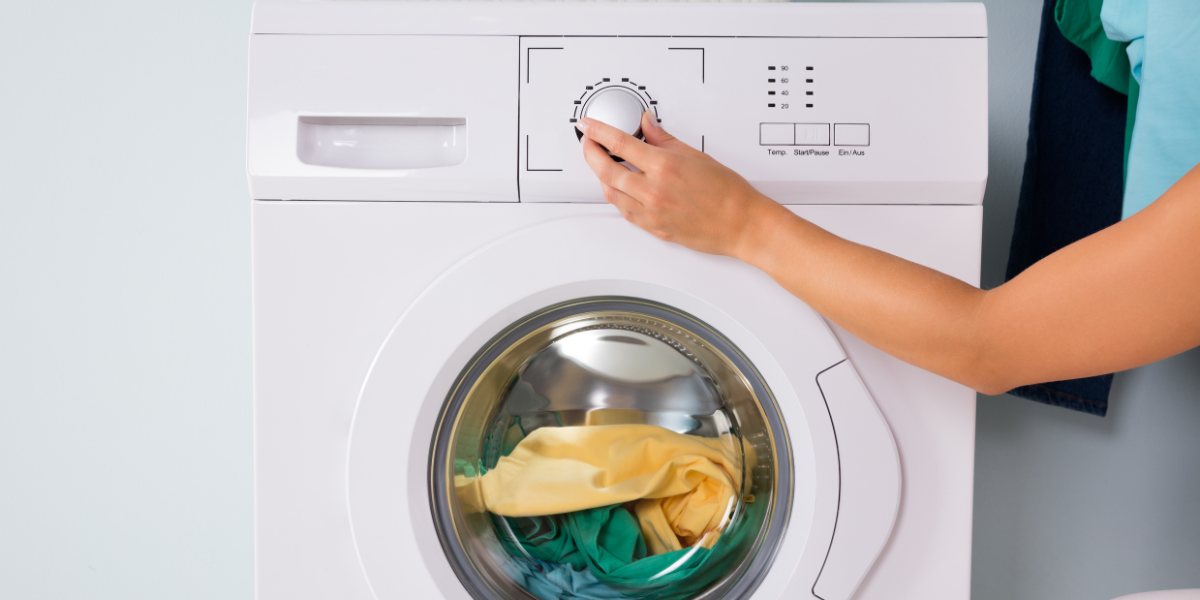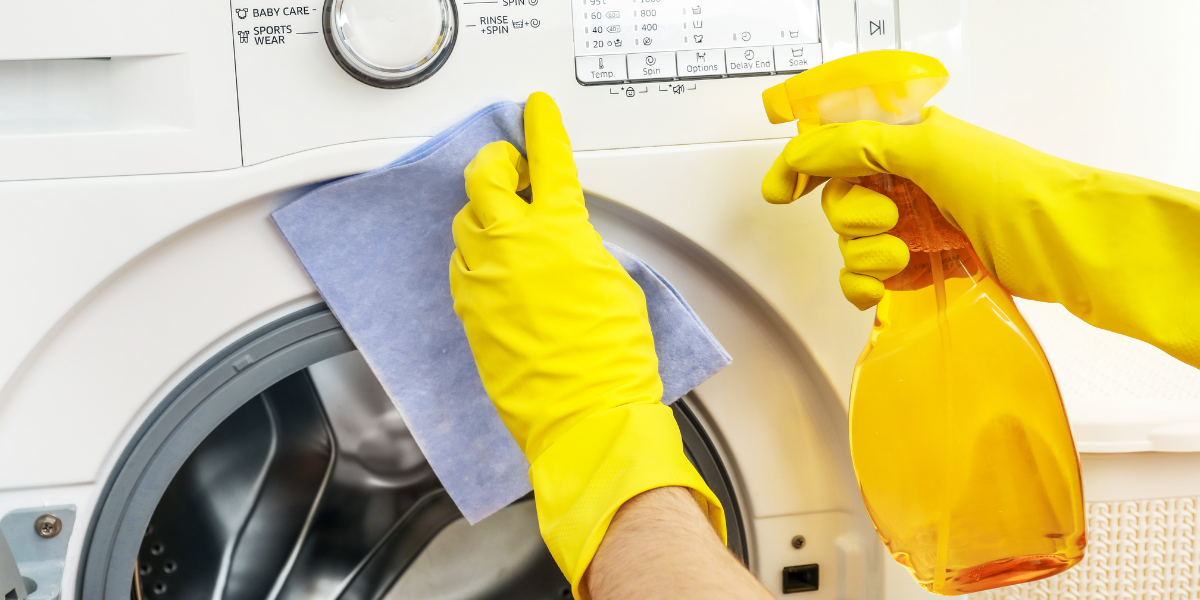Proper Use and Care of Your Washer
Get to know your washing machine inside out!
In the fast-paced rhythm of our modern lives, our trusty washers quietly toil behind the scenes, ensuring our clothes are always pristine. Yet, we often overlook the essential steps to maximize their longevity and efficiency. Learn the secrets of proper washing machine use and care for a fresher, cleaner wardrobe.
There are two main types of washing machines: top-load and front-load washers. Each machine offers unique features that cater to distinct preferences and laundry needs.
Top-Load Washing Machines: Top-load washing machines are designed with a convenient door on the top of the unit for loading and unloading your laundry. These washers utilize an agitator, a tall spindle in the center of the wash basket, to move the clothes around during the wash cycle. With its back-and-forth twisting motion, the agitator delicately massages the clothes, effectively loosening dirt and ensuring thorough cleaning.
Front-Load Washing Machines: In contrast to their top-load counterparts, front-load washers sport a side-swinging door on the front. They employ a horizontal drum that gently tumbles your laundry, and with a stacking kit, you can optimize space by placing a dryer on top of them. Front-load washers offer wheelchair-friendly accessibility and are also accommodating for individuals with a shorter stature. Additionally, a raised support box can aid taller individuals in easier loading and unloading. While using less water per cycle compared to top-load machines, front-load washers typically lock during operation, hindering last-minute laundry additions. Some higher-priced models now feature small doors for mid-cycle laundry insertion.
There are key components in a washing machine's anatomy that help it do its job:
- Drum or Basket: This is the inner compartment of the washing machine where your laundry goes. It rotates to ensure thorough cleaning by allowing water and detergent to penetrate the clothes.
- Agitator or Pulsator: Typically found in top-load washers, this central spindle with vanes or fins moves back and forth or in a pulsating motion to agitate the clothes and facilitate the cleaning process.
- Detergent Dispenser: This is the place where you add detergent to the washing machine, often in the form of a drawer or dedicated compartment.
- Control Panel: This is the interface that features buttons, dials, or a digital display that enables you to select desired wash settings, including water temperature, cycle duration, and special functions. It puts you in control of customizing your washing experience.
- Drain Hose: This hose removes dirty water from the washing machine during the draining process, ensuring your clothes are ready for the next phase of the laundry cycle.
How to Use Your Washing Machine
Have You Read the Instruction Manual?

Taking the time to familiarize yourself with the manual offers valuable insights into how to use your washing machine optimally, understand its specialized features, and learn about specific maintenance requirements. This knowledge empowers you to unlock the full potential of your machine, ensuring it lasts for years to come and delivers clean and fresh laundry every time.
Do You Know How to Pre-treat Stains?
Before putting stained clothes in the washing machine, remove excess stains with a paper towel, fork, or brush before pre-treating them. This step helps to minimize the stain, making it easier for the washing machine to effectively remove it during the wash cycle. By taking this extra care, you increase the chances of achieving spotless and stain-free results for your laundry. Here are examples of some common stains and how to pre-treat them:
- Blood or grass stains: Pour liquid detergent directly onto the stain and gently scrub it with a soft-bristled toothbrush in a circular motion.
- Grease stains: Soak the stain in a mixture of detergent and warm water.
- Body soils: Rinse the stain under cold water.
- Coffee or tea stains: Presoak the item and wash it with powder detergent.
Are You Reading the Care Labels?

The washtubs, triangles, irons, circles, and squares on your care labels mean something! By understanding laundry symbols, you can extend your clothes’ lifespan, maintain their color and shape, and avoid shrinkage or stretching. You can also make informed choices on which wash temperature to choose, whether to use bleach, and how to dry different garments.
Have You Separated Your Laundry?
Separating your laundry by their color or their fabric type prevents color bleeding, dye transfers, and damage or shrinkage. You can sort your garments by:
- Color shades: Keep lights and darks separate to avoid any color mishaps during the wash.
- Soil level: For heavily soiled or stained laundry, wash them separately on a longer, heavy-duty cycle to ensure thorough cleaning.
- Fabric type: Separate items with zippers and buttons from delicate knits and lingerie to prevent snags or damage.
- Fabric weight: Wash and dry heavier items separately from lighter clothes to ensure even cleaning and drying.
Which Detergent Should You Use?
When it comes to detergent, whether in powder, liquid, or liquid pacs form, each type offers distinct advantages and considerations.
- Powder detergent is ideal for everyday stains and odors, providing powerful cleaning capabilities. It works well with a wide range of fabrics and can be used for both white and colored clothes.
- Liquid detergent is particularly effective in tackling tough food, grease, or oil stains. It's also convenient for spot treating specific areas on garments. The liquid form allows for easy measurement and is suitable for both top-load and front-load washing machines.
- Liquid pacs, also known as laundry pods or capsules, provide pre-dosed detergent in a convenient and mess-free format. They are perfect for quick and effortless laundry, as you simply toss a pac into the washing machine. However, it's crucial to handle them with care and keep them out of the reach of children.
Are You Overloading Your Washer?
Overloading the washer can hinder cleaning performance by limiting water and detergent circulation, resulting in inadequate cleaning. It strains the machine's motor and components, reducing efficiency and potentially causing damage. Additionally, overcrowding leads to imbalanced loads, causing excessive vibrations, discomfort, and safety risks. To ensure optimal operation, check if there's enough space for clothes to move freely by placing your hand into the drum. If your hand can't fit, remove some clothes to avoid overloading the machine.
How to Choose the Right Water Temperature?
Selecting the appropriate water temperature for your laundry is essential for achieving effective cleaning, energy efficiency, and proper care for your garments.
- Cold water: Use cold water for dark, bright, delicate, lightly soiled items, and fabrics that are prone to shrinking. This temperature setting helps to preserve colors and prevent shrinking.
- Warm water: Opt for warm water when washing synthetic and permanent press fabrics, as well as towels. The warmth aids in removing dirt and stains while still being gentle on the fabric.
- Hot water: For whites, cotton fabrics, heavily soiled garments, and baby clothes, hot water is the ideal choice. The higher temperature helps to eliminate tough stains and thoroughly sanitize these items.
Which Settings Should You Select?

Washing machines come with a variety of cycles tailored to different clothing types. To select the appropriate cycle, refer to the fabric care labels on your garments.
- Normal cycle: This cycle is perfect for whites, sheets, towels, underwear, and socks. It provides fast agitation and a quick spin cycle for efficient cleaning.
- Delicate cycle: Use the delicate cycle for delicate fabrics such as wool and silk, as well as garments that require gentle washing. It features slow agitation and a gentle rinse cycle to protect delicate items.
- Permanent press cycle: Ideal for jeans, non-cotton items, and synthetic fibers, the permanent press cycle combines fast agitation with a slow spin cycle. This helps to reduce wrinkles on clothes that are prone to creasing.
How to Care For Your Washing Machine

Contrary to popular belief, the suds produced by your detergent do not automatically clean your washing machine!
- Make it a habit to run a clean cycle once a week or opt for a clothes-free hot rinse cycle. Every six months, give it a thorough deep clean by diluting vinegar with water and running a hot water cycle.
- Don't forget to inspect and clean the gasket around the door to ward off unpleasant odors and mildew. After each use, leave the door open for a few hours to ensure proper ventilation and prevent the growth of mold and mildew.
- Keep the detergent and fabric softener dispensers clean to prevent buildup, as they can create a greenish texture over time.
- Address detergent spills promptly by using a mild dishwashing detergent and wiping the interior of the drum with a moist cloth to remove lint and dirt deposits. This prevents sticky residue and bad smells from accumulating over time.
More Maintenance Tips
Maintaining your trusty washer is easier than you think! There are multiple ways to keep it in tip-top shape:
- Choose high-quality detergent that suits your machine and water type. Avoid using excessive amounts to prevent residue buildup and potential damage.
- Protect the finish by cleaning both the inside and outside of your machine. Use a gentle washing machine cleaner or glass cleaner to clean the sides. If you notice any scratches, consider using touch-up paint to cover them up.
- Ensure that the hoses are securely connected without any leaks or cracks. This prevents water spillage and potential water damage. Additionally, make sure to regularly clean the outlet to remove dirt and lint buildup.
Kudos on becoming a certified washing machine expert! It's time to apply your newfound knowledge and reap the rewards of a well-maintained and efficient machine. Don't miss out on our other
home improvement guides. With these resources at your disposal, you'll become a home care guru in no time!
